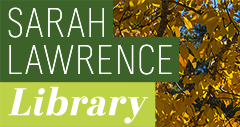Date of Award
11-2018
Document Type
Thesis - Open Access
Degree Name
MA in Women's History
Department
Women’s History Graduate Program
Abstract
This thesis was partially inspired by my personal experience of attending Emma Willard School, an all-girls boarding school in Troy, New York. This thesis examines the social, cultural and political history of the Queen Bee figure in the popular culture of the twentieth and twenty first centuries. The Queen Bee is a fluid anti-heroine however, a feminist character who while she tears down others around her to succeed is also genuine with relatable emotions. Here, I explore the 2000’s media culture’s fascination with the relational aggression and adolescent womanhood and its depiction of girls caught up in complex networks of social positions ranging from the Queen Bee to Bystander and Target. This thesis outlines the history of the Queen Bee figure from its emergence in 1949 through perhaps its most popular iteration in the early twenty-first century. In the early twenty-first century, the Queen Bee persona has become a contested terrain, at once negative and positive, much in the way the culture interprets feminism. Popular TV series Gilmore Girls (2000-2007) and Gossip Girl (2007- 2012) render two versions of Queen Bee figures in the early 2000’s television, offering a window into that contested terrain.
Recommended Citation
Schmer, Sarah Elisabet Stanislawa, "Honey, Spice and Sometimes Nice: The 20th and 21st centuries Cultural, Social and Political Work of the Queen Bee" (2018). Women's History Theses. 39.
https://digitalcommons.slc.edu/womenshistory_etd/39


